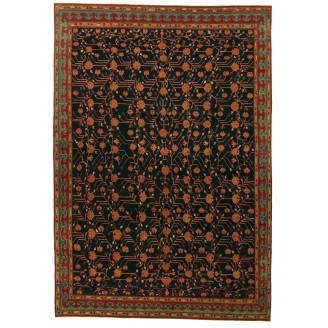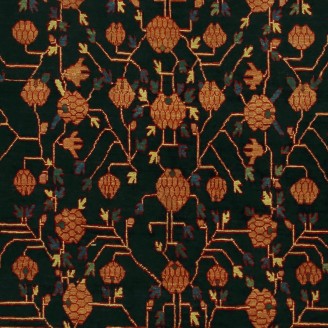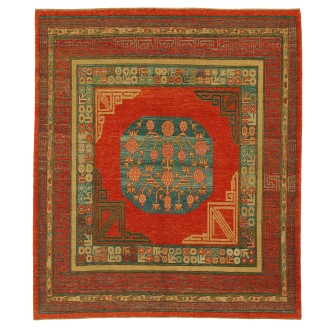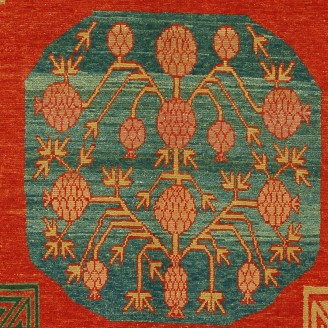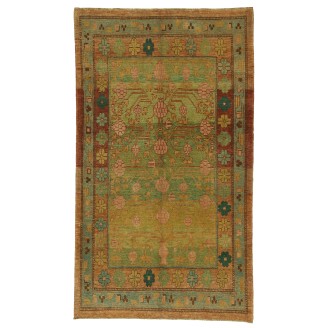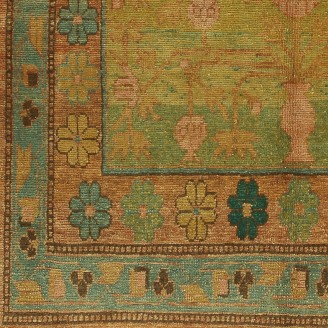Khotan Rug with Pomegranate Design
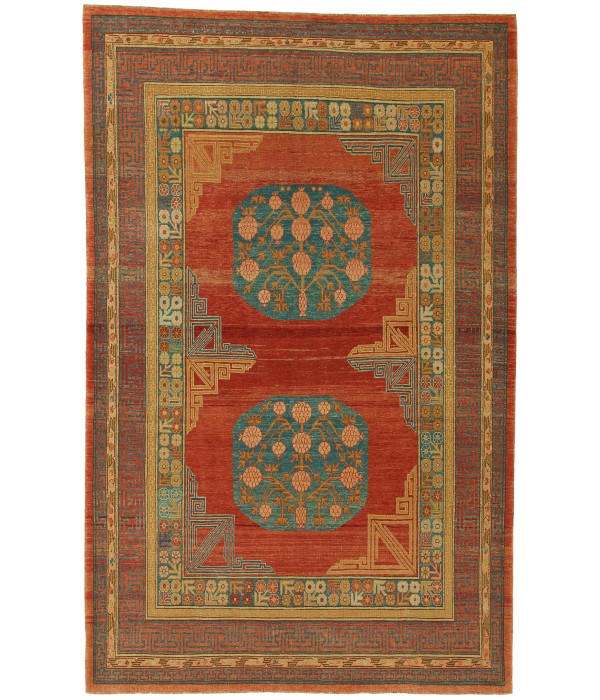
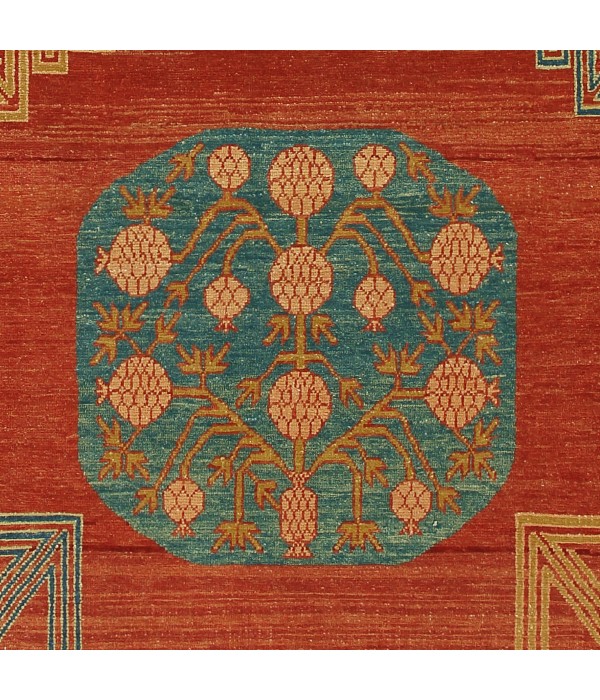
Out Of Stock
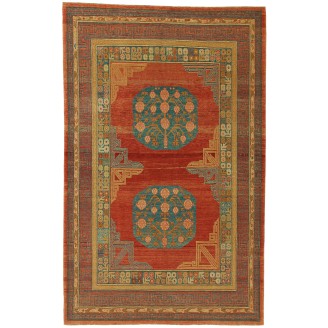
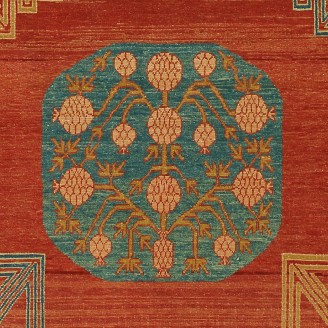
Model: ARTW0015Khotan Rug with Pomegranate Design
Group: Turkestan Rugs Family
Material of Pile: Natural Dyed Hand-spun Wool
Material Warp / Weft: Cotton on Wool
Structure: Symmetrical knot on depressed warp inclining to the right
Knots Density: 32x26
Pile (mm): 4
Production Place: Southeastern Anatolia – Diyarbakir
Location: Large
Stock: Out Of Stock
Dimensions:
The source of the rug comes from the book Hali Magazine 2014 Issue 181 pg.90. This is a pomegranate tree medallion design ( Double Square Khotan ) rug from the 18th century in the Tarim Basim region, Central Asia area. This pattern has been linked to the tree of life symbol, which is not inconceivable as symbols can often overlap. However, the pomegranate fruit, with its many seeds clearly visible, makes it more likely to be a symbol of marital fertility. 'Central Asia' is the name given to that vast territory, extending from the Caspian Sea to Chinese Turkestan, the Aral Sea, and the northern part of Afghanistan, across which for centuries the old trader caravans meandered back and forth along the Silk Route. Conquered by Russia in the 19th century, this much-contested region found itself renamed 'Russian Turkestan' and divided into five republics: Uzbekistan, Kirgizstan, Kazakhstan, Turkmenistan, and Tajikistan. In these lands, with their arid steppes, deserts, and mountainous massifs, live nomadic and semi-nomadic tribal peoples, loyal to their ancestral traditions, who weave on horizontal looms and produce relatively simple rugs designed to cover the floors of their yurts. The design of this rug is interpreted with a double medallion in the field, a series of floral and yun tsai tou borders, and soft colors chosen by our designers for this rug.
Dimensions:
6 ft 3 in x 10 ft 0 in ( 193cm x 305cm )
Price:
$0
Ex Tax: $0

